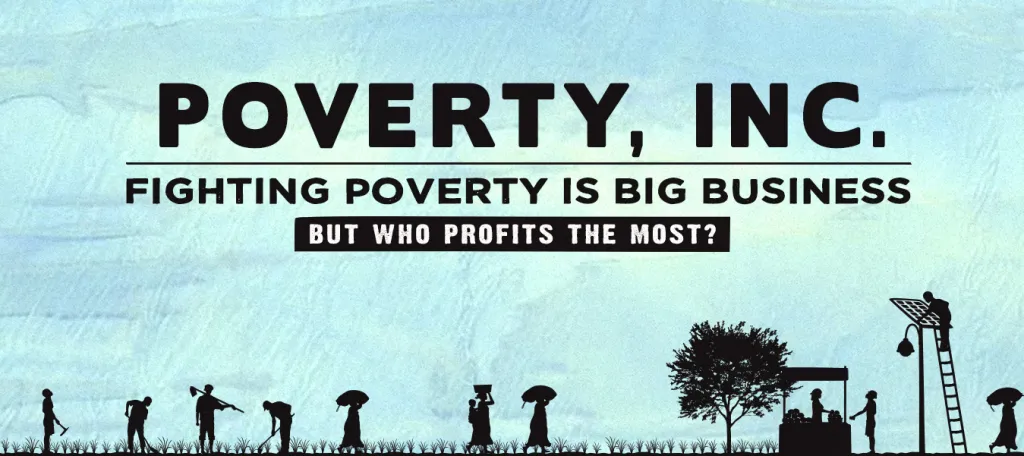Table of Contents
“The reason there will be no change is because the people who stand to lose from change have all the power. And the people who stand to gain from change have none of the power.”
–Machiavelli
The award-winning documentary* Poverty, Inc.* begins with this powerful quote by Machiavelli. Last Friday, the Stanford Eritrean and Ethiopian Students Association (SEESA), the Nigerian Students Association (NAIJA), the Center for African Studies (CAS), the Stanford African Students Association (SASA), and the Stanford Association for International Development (SAID), hosted a screening of the film that was followed by a Q&A with the co-producer of the film, Mark Weber. *Poverty, Inc. *examines the ecosystem of international aid for developing countries and explores the hidden side of doing good through 200 interviews within twenty countries ranging from Haiti to Kenya. Released in December 2014, Poverty, Inc. has earned thirty international film festival awards and has been screened in sixteen countries as of this writing.
While most people have an idea of how aid works on the giving side, *Poverty, Inc. *features voices from those on the receiving end. Several of the ideas presented in the film raise profound questions about the nature of the foreign aid industry.
The film defines the poverty industry as the billion-dollar collection of NGOs, for-profit contractors, and other charities. These organizations thrive by reinforcing the narrative of developing countries as barren and their people as dependent. While sentimental pictures and celebrity appeals grounded in these heart-wrenching narratives successfully raise awareness of real issues, interviewees in the film point out that they reinforce a paternalistic and false mentality. Author Theodore Dalrymple criticizes this form of paternalism for implying that the individuals suffering from poverty are inferior and cannot better their lives on their own. To the contrary, Dalrymple has observed that people do climb out of poverty if they have adequate access to to education, loans, and rights under the law because these factors foster personal responsibility.
In some circumstances, supplying outside aid can even contribute to a country’s poverty. As a struggling business owner states in the film, “no local business can compete with free.” When a country receives material aid, local businesses cannot compete with the influx of free items. By the time the aid ends, all local suppliers may be gone, priced out of existence. The movie cites Enersa as one example of this unfortunate effect. Enersa, a Haitian solar panel company, was almost bankrupted after the 2010 Haiti earthquake by donations of solar panels en masse from the developed world.
Social entrepreneurship, a growing form of charity, does not avoid this dilemma. *Poverty, Inc. *describes how TOMS, a company that provides one pair of shoes to a child for each pair purchased, is well-intentioned yet indirectly harmed local workers in regions that receive free shoes. Foreign aid thus creates a vicious cycle as countries need increasing amounts of aid to compensate for spiralling declines in local production, explains one farmer unable to earn a profit due to foreign food imports.
The economic problems discussed in the documentary support the film’s controversial conclusion: the poverty industry has to go.
After the film’s powerful conclusion, co-producer Mark Weber held a Q&A session with the audience to discuss the film’s grave message and possible next steps. Multiple members of the audience expressed their frustration with the situation presented in the film, and asked what could be done moving forward. Weber encouraged the audience to “try not to think about just writing checks to charities. Instead focus on having relationships with people.” He then suggested reacting to disasters such as the earthquake in Nepal by sending cash directly and buying local food, rather than flying food in. “If you feel the need to donate, then donate to smaller places where you can actually keep track of what they’re doing and you can have a relationship with them,” Weber suggested.
The interviewees in *Poverty, Inc. *emphasized the benevolent intentions of those involved in the charity industry. However, the film argues that intentions are insignificant unless followed by meaningful and effective action that assists those in need. As the documentary’s ideas continue to spread through screenings at different universities, future charities may be pressured into working on a smaller scale, demanding accountability, and collecting more experimental data on effectiveness. Poverty, Inc. has yet to be subjected to serious empirical testing—it is first and foremost a collection of anecdotes—but it should at the least push us to be more vigilant as to where our aid dollars are spent.





